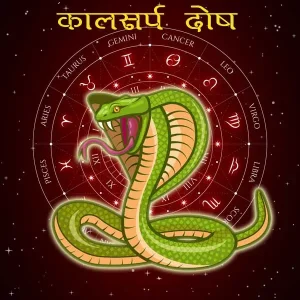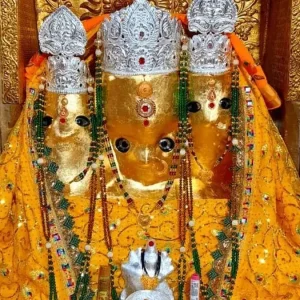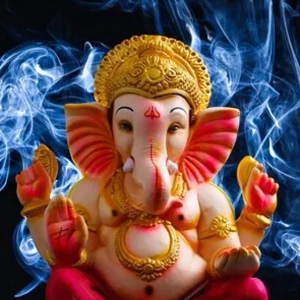In Sanskrit, the word Navaratri means “nine nights,” with nava denoting nine and ratri denoting nights. All forms of spirituality are based on the tantric tradition. Nine manifestations of Shakti are worshipped during these nine nights and 10 days in accordance with tantric and vedic rites. The most auspicious time for spiritual sadhanas and tantric worship of Shakti is during Navaratri, also known as Navadurga Parva. On Mahavidhya, you are seeing information about Navratri. The sadhaks study specific tantric rituals to channel Jain spiritual force under the tutelage of a tantric guru. In her nine manifestations, Maa Shailputri, Maa Brahmachaarini, Maa Chandraghanta, Maa Kushmaanda, Skanda Maa, Maa Kaatyayani, Maa Kaalratri, Maa Mahagauri, and Maa Sidhidaarti, Goddess Shakti is revered and worshipped.
Why Celebrate Navratri and What Does It Mean?
During the auspicious Navaratri season, Mahavidhya tantra sadhaks practise certain sadhanas and upasanas of the Shakti Mantra under the direction of their tantra master with complete confidence and dedication. In the following aspects, this time frame is very significant.
Shakti sadhana and prayers during this time will bestow wealth, auspiciousness, prosperity, knowledge, and other potent powers to overcome every obstacle in life. Tantra sadhana with ardent love and devotion eradicates all our impurities, vices, and defects and develops spiritual energy.
How frequently is Navratri celebrated?
Mahavidhya sadhaks do Navaratri Puja five times a year. They are the Ashadha Navaratri, Sharad/Ashwin Navaratri, Magh Navratri, Vasanta/Chaitra Navaratri, and Sakambari/Paush Navaratri. On mahavidhya, you are seeing information about Navratri.Only two of these five fortunate navratris are noticed by people. Only tantra sadhaks observe the other three navratris.
Magha Navami
Navratri falls in January or February this year. In the month of Magha (January–February), which is also known as Gupta Navaratri, there are nine days devoted to the nine manifestations of Shakti (the Mother Goddess). Tantra sadhaks typically observe these Navratras for shakti sadhana. During the Magha Shukla Paksha (the waxing phase of the moon), Magha Navaratri is observed.
Holidays of Chaitra
March or April brings about this Navratri. The start of the summer season is signalled by Chaitra Navratri. These navratras are often referred to as Basant or Spring Navratri since Mother Earth undergoes a substantial climatic change during them. Special tantric kriyas and shakti pujas are performed. Tara Jayanti is observed on Chaitra Navratri’s Ashtami. On Mahavidhya you are seeing information about Navratri. In addition, Bhishmashtami puja is performed to help your child develop a decent character. Lord Rama’s birthday, also known as Ram Navami, is commemorated on this day. Visit mahavidhya
Ashadh Navaratri
Navratri falls in June or July this year. For tantra sadhana, this Gupt navratri is very significant. The sadhaks practise yakshini sadhana in addition to shakti sadhana. Yakshini sadhana is at its most beneficial from this navratri until Ashwin navratri.
Visit Mahavidhya to learn more about Ashada Navratri..
Ashadh Navaratri
Navratri falls in June or July this year. For tantra sadhana, this Gupt navratri is very significant. The sadhaks practise yakshini sadhana in addition to shakti sadhana. Yakshini sadhana is at its most beneficial from this navratri until Ashwin navratri. Visit Mahavidhya to know more about Asadh Navaratri
Navratri Paush
Additionally called Sakambari Navratri. Navratri occurs in December or January this year. The general public is still unfamiliar with Sakambari Navratri, unlike the other two Gupt Navratris. Only the followers of the dikshit tantra observe this navratri. This Navratri is extremely significant for the environment. Sadhaks observe a 24-hour fast, and after dusk they eat a particular, constrained meal that differs from the rest of the navratras. On Mahavidhya, you are viewing information about Navratri. This Sakambari Navratri is observed from Ashtami to Purnima, as opposed to the other Navratris, which begin on Pratipada Tithe and terminate on Dashami Tithe. The final day, purnima, is when Sakambari Jayanti is observed.






